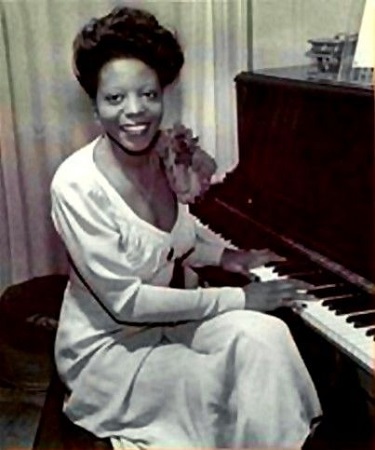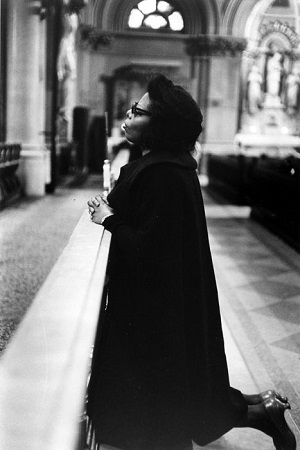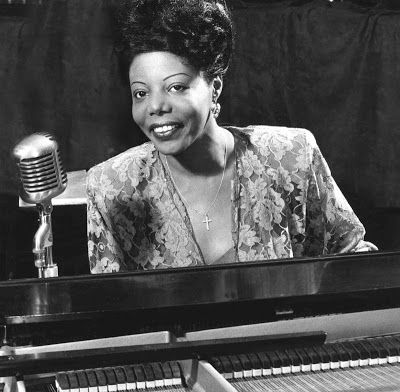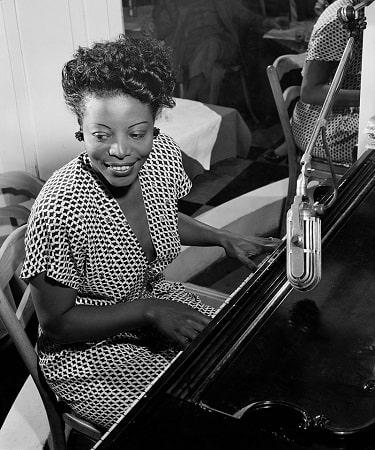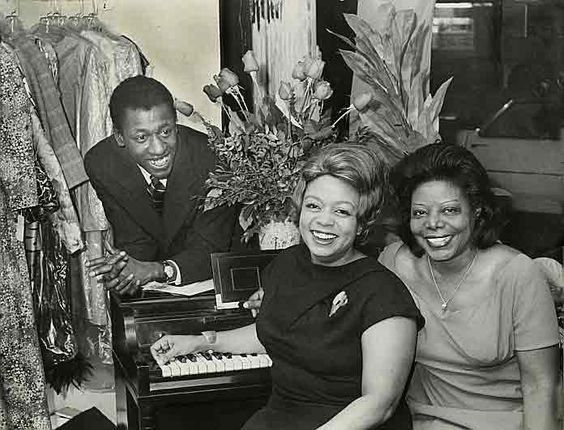Mary Lou Williams (1910-1981), a jazz pianist, composer, arranger, and educator, was known as “the lady who swings the band.”
She guided and encouraged bebop pioneers Thelonious Monk and Bud Powell in her Harlem apartment. She composed modern compositions including The Zodiac Suite and arranged for Benny Goodman, Dizzy Gillespie, and Duke Ellington.
In the 1950s, she quit the jazz scene to become a Catholic, and she later returned to the stage with her dynamic synthesis of jazz and religious music.
She was one of the influential and handfuls of musicians whose creative participation contributed to shaping jazz’s course for most of the twentieth century.
She established the Foundation to help drug and alcohol-addicted musicians.
Williams wrote several religious works. The first was titled Black Christ of the Andes, and in 1975, she conducted the first jazz mass in front of thousands of people at New York City’s St. Patrick’s Cathedral.
Williams became a Catholic in 1956 and did not perform for almost three years.
Mary Lou Williams was born in Atlanta, Georgia, United States.
Thelonious Monk, Bud Powell, and Dizzy Gillespie admired Mary Lou Williams as the “Mother of Bebop.
10. Outstanding musical skills and abilities since a child
Mary Lou Williams was born Mary Elfrieda Scruggs on May 8, 1910. After being detained in Atlanta, Georgia, Williams grew up in Pittsburgh, Pennsylvania.
Williams learned to play the piano from her mother, a musically skilled pianist, at a young age. She had trained herself to play the piano when she was three years old.
She began performing publicly at seven and became known as “The Little Piano Girl” in Pittsburgh. By the age of ten, she earned the nickname “the Little Piano Girl.”
Williams was a musical prodigy with impeccable pitch and a solid musical recall. She started her professional career as a musician at 15, claiming Lovie Austin as her most significant influence. She performed with Jelly Roll Morton, Willie “the Lion” Smith, Fats Waller, and Duke Ellington.
9. Williams’ Career encounters and involvements
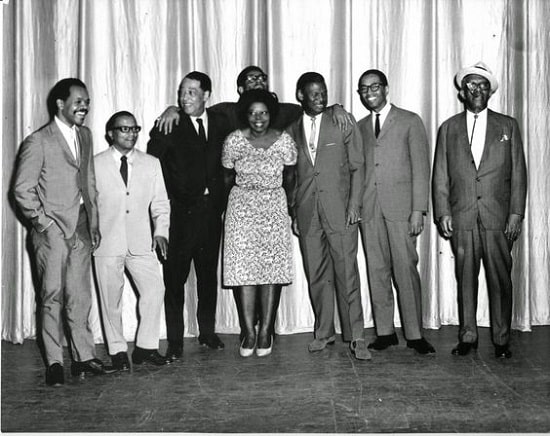
Early at the age of 12, she performed with Duke Ellington and his initial small group, the Washingtonians, in 1922. After her husband received an invite to join Andy Kirk’s group in Oklahoma City in 1929, Williams took over as leader of the Memphis band.
She wrote songs for Kirk such as “Foggy Bottom,” “Walkin’ and Swingin’,” “Little Joe from Chicago,” “Roll ‘Em,” and “Mary’s Idea.” At the idea of Jack Kapp at Brunswick Records, Williams recorded “Drag ‘Em” and “Night Life” as piano solos under the name Mary Lou.
She wrote “Roll’ Em,” a blues-based boogie-woogie composition that followed her hit “Camel Hop,” named after Goodman’s radio program sponsor, Camel cigarettes.
In the Groove (Brunswick), a duet with Dick Wilson was released in 1937, and Benny Goodman invited her to compose and arrange for his band. Goodman attempted to sign Williams to write only for him, but she declined to freelance.
Williams later joined the band in New York City before moving to Baltimore to marry Harold “Shorty” Baker. Dizzy Gillespie commissioned Mary Lou Williams to write “In the Land of Oo-Bla-Dee,” and Duke Ellington agreed to perform “Walkin’ and Swingin’.”
She wrote the classically based Zodiac Suite in 1945. Every twelve pieces were dedicated to one of her musical partners and corresponded to a zodiac sign.
She arranged the suite with Jack Parker and Al Lucas and presented New York City on December 31, 1945.
8. Later years of Mary Lou
In 1970, Williams released an essential album titled The History of Jazz. Williams gave a first-person narrative of her years in jazz and exhibited its changing rhythms and forms on the keyboard during solo music performances and lectures.
Solo Recital (Montreux Jazz Festival, 1978) was her final recording, and it featured a medley of spirituals, ragtime, blues, and swing.
Williams’ reworkings of “Tea for Two,” “Honeysuckle Rose,” and her two songs “Little Joe from Chicago” are other highlights. Mary Lou Williams, at 71, died of bladder cancer in North Carolina in 1981.
Dizzy Gillespie, Benny Goodman, and Andy Kirk attended her funeral at St. Ignatius Loyola Church. She was laid to rest in Pittsburgh’s Calvary Catholic Cemetery.
7. Awards and Achievements
In 1972 and 1977, Williams was awarded Guggenheim Fellowships. In 1973 and 1980, she received honorary degrees from Fordham University and Rockhurst College.
Williams established the Mary Lou Williams Foundation in 1980. She was honored for a Grammy Award in 1971 for Best Jazz Performance, Group for the album Giants, Dizzy Gillespie, Bobby Hackett, and Mary Lou Williams.
Duke University’s Trinity Award for contribution to the university was bestowed upon him in 1981.
6. Williams’ legacy and commemoration
Her papers are housed at the Institute of Jazz Studies at Rutgers University in Newark. Mary’s Ideas (Umlaut Records), a double-CD including rare and newly discovered works by Mary Lou Williams, was released in 2021 by the Umlaut Big Band.
She is one of three women included in the iconic photograph of jazz legends, A Great Day in Harlem. The Little Piano Girl, a children’s book based on Mary Lou Williams, was released in 2010 with pictures by Giselle Potter.
Williams took a break for a while. Williams began performing regularly at the Café Society in New York’s Greenwich Village in 1943, the city’s first racially mixed jazz club.
Zodiac Suite, her first large-scale composition, premiered at Carnegie Hall in 1946 with the New York Symphony Orchestra. Williams started hosting her radio program, the Mary Lou Williams.
Despite the fact that she was becoming tired of the musician’s lifestyle. She traveled to Europe in the early 1950s, working alongside as a jazz pianist in London and Paris nightclubs, but again she abruptly left a Paris stage one day in 1954 and returned to New York.
Williams made her final retirement from performances and began volunteering in Harlem. After stepping away from a performance during a concert in Paris in 1954, she took a three-year break from playing.
Her energies were then mainly directed toward the Bel Canto Foundation, which she founded with her savings to transform her apartment into a transitional home for musicians suffering addiction.
5. Conversion to Catholicism
She also had a religious epiphany and switched from her Southern Baptist background to Roman Catholicism.
She founded the Bel Canto Foundation in 1957 to assist musicians in the New York region who were struggling with substance abuse, and she handled the thrift shop that supported it.
Her hiatus may have been prompted by the demise of her long-time friend and student Charlie Parker in 1955, who likewise battled addiction for most of his life.
Father Anthony was contributory in encouraging Williams to resume his musical career. They informed her that she might continue serving God and the Catholic Church by using her unique talent for music composition.
In the 1960s, Williams became good friends with and managed by Father Peter O’Brien, a Catholic priest. Throughout the 1960s, she focused on sacred music, hymns, and masses.
Following her absence, her first work was a Mass that she composed and performed, titled Black Christ of the Andes (1963).
Williams worked hard to get young choirs to play her works, including “Mary Lou’s Mass” in St. Patrick’s Cathedral at New York City in April 1975 in front of a crowd of over three thousand people. This performance was the first time a jazz musician had performed at the church.
4. Gained Fame as Arranger
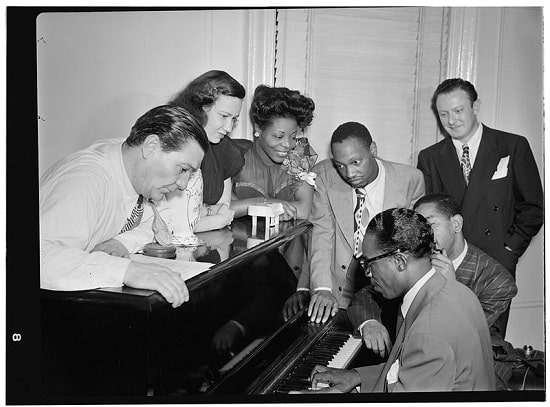
In 1930, Williams released her debut solo record, which featured two tunes. Throughout the rest of the decade, she became a pianist and arranger.
She composed music for Duke Ellington, Louis Armstrong, Tommie Dorsey, and Benny Goodman. Her most well-known pieces include “Camel Hop” and “Roll ‘Em” for Goodman, as well as “What’s Your Story Morning Glory.”
In New York City, bebop was blossoming. Many musicians, including Charlie Parker, Dizzy Gillespie, Max Roach, Bud Powell, and Thelonious Monk, gathered in her Harlem apartment for spontaneous jam sessions.
Art Blakey, her drummer, pushed her to form her group, which she joined with a guy who became her new husband, trumpeter Harold “Shorty” Bake.
Later, she joined Duke Ellington’s ensemble as an arranger. Her arrangement of “Blue Skies (Trumpet No End),” a classic Ellington piece from 1946, highlights this period in her career.
3. She had a flourishing career long before the Women’s Liberation
Many male virtuosos came to Kansas City, Memphis, or Harlem with nothing but an instrument and swung their way to prominence. If they had any female colleagues, they were typically vocalists.
Nonetheless, Mary Lou Williams made a name for herself as a pianist, composer, and arranger at a time when jazz, like many other disciplines in the United States, kept few top positions for women.
She adapted to the times. Williams wasn’t just one genre woman; she worked on Blues, swing, bebop, composing Masses, and many more. History may trace the evolution of twentieth-century jazz directly through her life. She even liked free jazz in the 1970s.
2. A creative Musician and Composer who worked tirelessly
Mary Lou had a sharp ear, a keen awareness of time and drama, and a powerful drive. Notably, she progressed through the jazz eras of swing, bebop, and free jazz. Her solo debut at the age of 20 in 1930 remains one of the classic records.
Williams would never stop pushing herself. Even when she was seriously ill in 1981, she continued to work on the new composition, Wind Symphony.
Andy Kirk recognized Mary Lou Williams’ brilliance when he heard her play, but it took him a year to accept her as a regular member of the Twelve Clouds of Joy.
Williams was a talented player and an inventive composer and arranger who gave the Andy Kirk swing band of the 1930s their distinct sound. She was one of the first jazz performers whose composition was performed by a significant symphonic orchestra.
1. She arranged a 12-part composition: “The Zodiac Suite.”
Mary Lou Williams’ 1945 Zodiac Suite is a collection of musical portraits of acquaintances from each zodiac sign. Piano solos, duets with bassist Al Lucas, and trios with drummer Jack “The Bear” Parker are among the works in the composition.
The Zodiac Suite was conceived as a series of character sketches and musical portraits of friends from each sign, presenting on a weekly radio show. The suite featured Duke Ellington, Billie Holiday, Dizzy Gillespie, Art Tatum, Bud Powell, and Thelonious Monk.
The suite is a fantastic workout in extended composition and showcases Williams’ diverse palette index. In 1957, Dizzy Gillespie’s big band recorded three pieces.
The intimacy of these original recordings, on the other hand, is exceptional, with Williams effectively blurring the line between composition and improvisation.
Conclusion
Williams was a highly regarded musician in her day, with a repertoire that ranged from boogie-woogie to bebop, and she was a key member of what became known as the Kansas City big-band sound throughout the 1930s.
Williams accomplished considerably more than simply breaking down the gender restrictions that had kept women out from the elite ranks of jazz musicians for so long over her more than 50-year music career.
She was one of the handfuls of musicians whose creative participation contributed to shaping jazz’s course for most of the twentieth century.
In some respects, Williams’ career parallels the evolution of jazz. She later taught at Duke University and composed jazz-inflected liturgical pieces for Roman Catholic masses.

